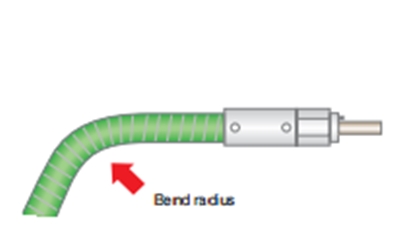
Laser Fiber Bend Radius
In this article, we will talk about the minimum bend radius of the laser fiber. We have received many fibers from our customer that are broken. One of the main reasons is that users exceeded the minimum bend radius of the laser fiber.
It can occur in many instances. For example the positioning of the focusing welding head and the laser fibre is at an odd angle and there is no space for the fibre to be laid out as shown in out illustration above. When accidents occur during welding where users trip over the laser fibre if it is not well laid out on the factory floor. The sudden tug can cause micro cracks in the laser fiber and resulting in breakage of the sensitive laser fiber.
When the laser fiber is bent, light guided inside the core of a fiber can leak into the cladding, and in turn, reach the polymer layer. Conceivably, with a higher absorption coefficient and lower laser damage threshold than the silica glass, the polymer material is more susceptible to laser damage, and therefore the mode of fiber failure may be caused by the polymer coating.
It is recommended for users to lay out their laser fibre during usage and avoid sharp bend corners. When the fibre head is damaged, users should also keep a minimum radius of 150mm when storing the fiber and when sending in for Laser fiber repair. Fibers should not be rolled up in small reels because this causes stress in the laser fibre and may result in micro cracks. In the long time, the guided laser evergy can leak from these micro cracks causing the fiber to fail.
For more information on Laser fiber repair, please refer to our product service catalogue for details.
Laser fiber bend radius
| Fiber Size (micron) | Minimum bend radius (mm) |
| 100 micron | 100 |
| 200 micron | 100 |
| 300 micron | 100 |
| 400 micron | 100 |
| 600 micron | 150 |
| 800 micron | 200 |
| 1000 micron | 250 |
